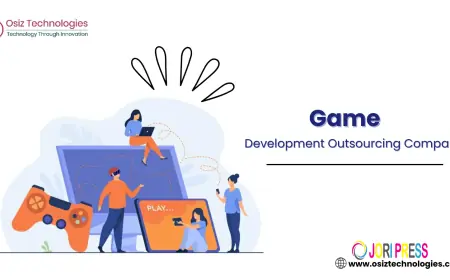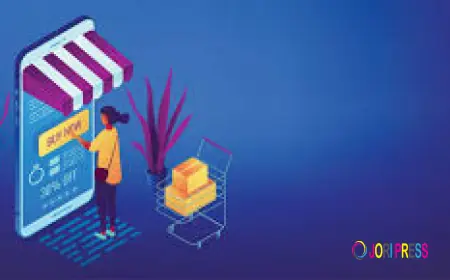Cross-Layer Communication: How DApps Are Bridging Blockchain Ecosystems
Explore how cross-layer communication enables DApps to bridge blockchains. Professional dapp development services for secure, scalable, multi-chain applications.

Introduction: The Need for Cross-Layer Communication in DApps
The rapid expansion of blockchain ecosystems has resulted in multiple layers of networks, each with its own unique protocols, consensus mechanisms, and scalability solutions. While this diversity enables specialized functionality, it also creates fragmentation that can limit interoperability, user experience, and the seamless flow of digital assets.
Decentralized applications (DApps) are now leveraging cross-layer communication to bridge these ecosystems, allowing information, assets, and smart contracts to interact across different blockchains. This innovation enhances user experience, unlocks new use cases, and strengthens the utility of decentralized networks.
For businesses aiming to build DApps with robust cross-layer capabilities, partnering with a professional dapp development company is critical. Expert dapp development services ensure that cross-layer integrations are secure, scalable, and efficient.
This article explores the architecture, technology, use cases, benefits, challenges, and future of cross-layer communication in DApps.
Understanding Cross-Layer Communication
Cross-layer communication refers to the ability of DApps to interact seamlessly across different blockchain layers, including Layer-1 (base blockchains), Layer-2 scaling solutions, and sidechains. It enables the transfer of assets, execution of smart contracts, and data sharing without compromising security or decentralization.
Types of Cross-Layer Communication
-
Layer-1 to Layer-2 (L1↔L2): DApps bridge base chains like Ethereum with Layer-2 solutions such as Arbitrum or zkSync for faster and cheaper transactions.
-
Layer-2 to Layer-2 (L2↔L2): Communication between different L2 networks allows asset movement and protocol interoperability.
-
Cross-Chain Bridges: Enable transactions and interactions across entirely separate blockchains, such as Ethereum to Solana or Binance Smart Chain.
A professional dapp development company can design dapp development services that implement these interactions securely and efficiently, ensuring seamless interoperability.
Architecture of Cross-Layer DApps
Building DApps capable of cross-layer communication requires a layered architecture that integrates multiple components.
1. Smart Contract Layer
The smart contract layer forms the foundation of cross-layer operations. Contracts on multiple layers interact with each other, maintaining the rules and ensuring trustless execution. Key features include:
-
Atomic Swaps: Ensure secure asset exchanges between layers without intermediaries.
-
Cross-Layer Oracles: Provide verified data from one layer to another.
-
Event Relays: Trigger actions across layers based on predefined conditions.
2. Messaging and Relay Layer
The messaging layer facilitates communication between chains. Relayers, state channels, and protocol-specific messaging systems transmit validated information across layers, ensuring reliability and integrity.
3. Off-Chain Middleware Layer
Off-chain infrastructure supports heavy computation, storage, and transaction batching. Middleware solutions process large datasets, manage queued transactions, and ensure efficient cross-layer synchronization.
4. Oracle Layer
Oracles bridge DApps with real-world data and external APIs, ensuring accurate and secure information feeds across layers. Trusted oracle networks are essential for high-stakes applications such as DeFi and enterprise solutions.
5. Frontend User Interface Layer
The frontend provides a seamless user experience, abstracting the complexity of cross-layer operations. Users can interact with multiple layers as if they were a single unified platform.
Professional dapp development services ensure the architecture is optimized for performance, scalability, and security.
Use Cases of Cross-Layer DApps
1. Decentralized Finance (DeFi)
Cross-layer communication allows users to move assets between Layer-1 and Layer-2 networks efficiently, enabling faster trading, lower fees, and access to multiple liquidity pools. AI-powered analytics can optimize transaction routing, ensuring users get the best outcomes.
2. NFT Marketplaces
NFTs can be minted on one chain and traded across multiple networks without duplication. Cross-layer DApps ensure provenance, secure ownership transfers, and interoperability, creating a unified NFT ecosystem.
3. Gaming and Metaverse
Gaming DApps benefit from cross-layer communication by integrating assets, rewards, and virtual goods across different blockchains. Players can use their in-game items seamlessly across multiple ecosystems.
4. Supply Chain and Logistics
Enterprises use cross-layer DApps to share data and track assets across different blockchain networks. This improves transparency, efficiency, and trust while maintaining decentralized governance.
5. Identity and Reputation Systems
Cross-layer DApps allow users to carry verified credentials, reputation scores, and access rights across multiple platforms and blockchain ecosystems, enhancing privacy and interoperability.
A professional dapp development company provides dapp development services to implement these use cases securely and efficiently.
Benefits of Cross-Layer DApps
Enhanced Interoperability
Cross-layer communication allows DApps to interact with multiple blockchains, unlocking new functionality and expanding user reach.
Improved User Experience
Users can move assets, execute smart contracts, and access services across layers seamlessly, without dealing with the underlying complexity.
Cost and Performance Optimization
Layer-2 solutions reduce fees and increase transaction throughput while maintaining Layer-1 security.
Scalability
Cross-layer architectures distribute workloads across multiple networks, enabling DApps to handle higher transaction volumes.
Innovation and New Use Cases
Cross-layer DApps create opportunities for complex DeFi strategies, multi-chain NFT ecosystems, and decentralized governance models.
Professional dapp development services ensure these benefits are realized while maintaining security, performance, and compliance.
Challenges in Implementing Cross-Layer DApps
Security Risks
Bridges and relayers can be targets for attacks. Secure smart contract audits and trusted middleware are essential to prevent exploits.
Data Consistency
Ensuring consistent state across layers requires careful protocol design and reliable consensus mechanisms.
Complexity of Integration
Integrating multiple blockchain networks, protocols, and oracles increases technical complexity and requires specialized expertise.
Latency and Synchronization
Cross-layer transactions may experience delays due to confirmation times, message relays, or off-chain processing.
Regulatory Compliance
Multi-chain interactions must adhere to varying regulations in different jurisdictions, particularly for financial DApps.
A professional dapp development company addresses these challenges with comprehensive dapp development services, including security audits, protocol optimization, and compliance frameworks.
Future Trends in Cross-Layer DApps
The future of cross-layer DApps is promising, with several emerging trends:
-
Cross-Chain DeFi Ecosystems: Unified liquidity pools and financial services across multiple networks.
-
Interoperable NFT Standards: NFTs usable across diverse ecosystems and platforms.
-
Multi-Chain Governance Models: DAOs capable of managing assets and decisions across multiple blockchains.
-
AI-Driven Cross-Layer Optimization: AI models optimizing transaction routing, gas costs, and execution order across layers.
-
Decentralized Identity Integration: Cross-layer identity solutions for authentication, verification, and reputation management.
Professional dapp development services enable businesses to implement these innovations efficiently and securely.
Conclusion
Cross-layer communication is redefining how decentralized applications interact, unlocking interoperability, scalability, and efficiency across blockchain ecosystems. By bridging multiple layers, DApps deliver seamless user experiences, enable innovative use cases, and maximize the potential of decentralized networks.
Engaging a professional dapp development company ensures that cross-layer DApps are designed, developed, and deployed securely. Expert dapp development services guarantee performance, compliance, and resilience, empowering businesses to thrive in the multi-chain future of Web3.
FAQs
1. What is cross-layer communication in DApps?
Cross-layer communication allows DApps to interact seamlessly across different blockchain layers, including Layer-1, Layer-2, and sidechains, enabling asset transfer and smart contract execution.
2. Why is cross-layer communication important for DApps?
It enhances interoperability, reduces costs, improves performance, and enables new use cases like multi-chain DeFi and NFT ecosystems.
3. How does a dapp development company support cross-layer DApps?
They provide expertise in multi-chain integration, smart contract development, security audits, and optimized architecture through professional dapp development services.
4. What are the challenges in building cross-layer DApps?
Challenges include security risks, data consistency, integration complexity, latency, and regulatory compliance.
5. Which industries benefit from cross-layer DApps?
Finance, gaming, NFT marketplaces, supply chain management, and identity systems benefit from cross-layer communication to enhance efficiency, interoperability, and user experience.
What's Your Reaction?
 Like
0
Like
0
 Dislike
0
Dislike
0
 Love
0
Love
0
 Funny
0
Funny
0
 Angry
0
Angry
0
 Sad
0
Sad
0
 Wow
0
Wow
0















































